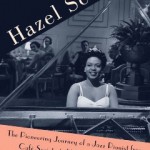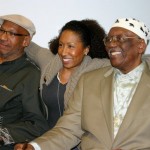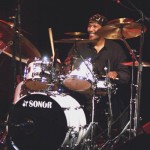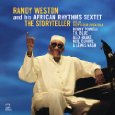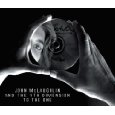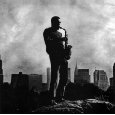Several weeks ago at a Brooklyn book signing at the MoCADA gallery for native son Randy Weston and our new book African Rhythms (Composed by Randy Weston, Arranged by Willard Jenkins published by Duke University Press; see elsewhere in The Independent Ear) I had the pleasure of meeting author and thespian Karen Chilton. Most recently she authored the Hazel Scott bio and prior to that co-authored Gloria Lynne’s memoirs with Ms. Lynne. As we swapped stories about our book odysseys there was remarkable simpatico not only with our respective paths but also with Karen and the other contributors to our ongoing series of conversations with black music writers. Her participation in this series was a no-brainer.
What’s been your experience writing about jazz and music in general?
Karen Chilton: Extraordinary. I never set out to write books, much less books about jazz. When I moved to New York City from my hometown Chicago eighteen years ago, my only intention was to be an actor, to perform in the theater and write for the stage. My interests were purely in the dramatic arts — theater and film. The only works I ever hoped to publish were my stage plays. And while I’ve had the great fortune of doing all I’ve set out to do, my journey has been anything but predictable. It’s been one surprising turn after the other. I believe the first twist in the path came when I decided after studying classical piano from ages 5 to 17 at the Chicago Conservatory of Music to cast it all aside, and study Economics and Finance in college. I still have no reasonable explanation for THAT decision, but I found solace in playwright Edward Albee’s famous quote: “Sometimes it’s necessary to go a long distance out of the way in order to come back a short distance correctly.”
For years I worked as a freelance writer to support my acting habit. [Editor’s note: now there’s a twist on the usual writer’s path!] Because I always loved music, especially jazz, I opted to do music reviews and features on musicians. Eventually, I met a woman who chased me down in Barnes & Noble asking if I knew any women who wrote books about jazz. I promptly told her I didn’t and pointed her in the direction of the Information Desk. I think I even made some snide remark like: “Jazz books are written entirely by men, and most of them aren’t even American.” She turned out to be Gloria Lynne’s publicist. She gave me her card and asked me to call her if I knew anyone that might be interested in co-authoring Ms. Lynne’s memoir.
At the time I was working a temp job at a major record label that I believed was sure to send me straight to an asylum, so the very next day I called and suggested myself for the job. I had about five years’ worth of feature articles on all kinds of musicians, from Youssou N’Dour to Jon Lucien to Seal to show as writing samples. I was initially turned down by the literary agent having had no track record as an author, but six months later, I was called back and offered the gig. Gloria Lynne chose me. She liked my writing style and she wanted to tell her story to another Black woman. That’s how it all began.
It was a baptism of fire. The writing came easy. It’s all storytelling to me. Being an actor and writer are extensions of the same gift, the gift of telling a story well whether it’s on the page or on the stage. And Gloria Lynne has a fascinating life story which made my creative work a pleasure trip. The countless hours we spent together talking over her kitchen table were more fun than any two people ought to be allowed to have, but dealing with the rigors of actually getting the book published — the publisher, the agents, the editors, the production team, the publicists — it was quite overwhelming. Gratification came later. Much later…
Karen Chilton’s successful collaboration with the distinctively soulful song stylist Gloria Lynne.
Do you feel that being an African American woman posed any impediments particular or even peculiar to your pursuit of writing about black music?
YES. Well first, for reasons beyond my comprehension, women are typically not expected to know much about music, especially not jazz. It’s akin to a woman knowing a lot about sports (which I love as well); you’re treading on male-dominated territory. You’re often treated like an interloper. I’m speaking in generalizations of course, but those kinds of attitudes do exist. So it becomes a question of your credibility. It arises when trying to get interviews with musicians on the front end and trying to get publicity for your work in major music journals on the back end. In the case of Hazel Scott, it was almost comical because at first editors would ask: Hazel Scott? Who is SHE?” Then they’d look at me and say: “Who are YOU?”
While researching the Hazel Scott biography and simultaneously looking for a publisher — which took nearly five years, one editor — a woman — at a very prestigious house seriously questioned my ability to write about the subject. She suggested that somehow because I was a Black woman, I wasn’t capable of writing about another Black woman. Absurd, I know. So what do you do? Say exactly what’s on your mind and burn that bridge down to a crisp right then and there, or smile politely and leave? I left. When my then agent (who was Jewish) and I walked out of the building, I turned to her and said bluntly: “If you and I had switched places and YOU were the author and I was your agent, we might have had a better chance at a deal.”
I am of the opinion that American publishers are exceedingly comfortable with books about African Americans — our culture, our art, our music, our history — being written by non-Black writers. It’s as if the Black American experience is open to any and all purveyors; everyone gets to have their say about us, unless it is US… well, then watch out! I can’t think of another group of people in this country whose culture has been co-opted with such regularity; we are constantly being dissected, examined, explained… It’s so commonplace that being a Black writer documenting the experience of your own people is almost exotic, something new, requiring a different set of rules, a new set of expectations. To complicate matters further, bias exists within our community as well. On the flipside, an African American editor — a woman — responded to my [Hazel Scott] book proposal by saying: “This would be a great book IF it was written by someone else.” Someone else like who?! So I’ve caught it from both ends. It’s all very curious. Now, judging from the number of books being published today by Black writers what I am saying may sound ridiculous to some, but I’m not talking about the final outcome, the ultimate output (or the quality of the output), but about the sheer madness that many Black authors encounter on their quest to find a publisher. It’s the part of the story that no one gets to read.
Ms. Chilton did indeed persevere and realize her Hazel Scott bio
In writing books on Gloria Lynne and Hazel Scott, did the fact of who you are pose any particular challenges in your quests at getting at the essence of these two great and underappreciated artists?
Fortunately, I felt very much at home writing both books. By virtue of my own life experience and my being a performer, I intrinsically understood the demands and challenges of their careers. However, as a biographer, you’re obsessed with the idea of “getting it right.” It can be an overwhelming thing holding someone’s ‘life’ in your hands as it were, and crafting a narrative that is a truthful reflection. With Gloria Lynne, of course, I had her there with me if I ever needed more clarity. It was just a matter of picking up the phone. With Hazel Scott, it was much more daunting. There were so few people around to talk to who knew her intimately. Her running buddies were Dizzy Gillespie and his wife Lorraine, Duke Ellington, Billie Holiday, Lester Young, Mary Lou Williams, Lena Horne… Luckily, her son Adam Powell lll, was extremely generous, sharing his mother’s memorabilia with me, including her personal journal writings which were the beginnings of the memoir she was working on before her death in 1981. I also had the pleasure of interviewing people like Mike Wallace (CBS 60 Minutes) who was a lifelong friend of Hazel and her ex-husband Adam Clayton Powell, Jr.; jazz pianist Marian McPartland, Matthew Kennedy (former director of the Fisk Jubilee Singers), Murray Horwitz (co-creator of Ain’t Misbehavin’) among others.
Still, getting interviews and/or gaining the trust of interviewees was probably my most challenging and time-consuming task. Because I am not affiliated with an academic institution or a major newspaper or magazine, my requests for interviews were declined often, if not ignored completely. I had to do some extra talking/convincing/cajoling in order to gain access to information. I certainly couldn’t say I’m an actor who happens to write jazz biographies on the side (I made that mistake once and I’m still waiting for that musician to return my call!). It was one of my greatest disappointments with the project. I felt that Hazel Scott deserved better. If they couldn’t submit to even a 5 or 10 minute conversation for my benefit, surely they could have done it for her.
Why do you suppose the efforts of Black writers chronicling jazz and jazz artists is different from the similar pursuits of others?
I wish I had a coherent answer to this question; something that actually made some sense. I have several theories, some that I’ve tossed around with other Black writers who write about jazz, but I’ve yet to come to a conclusion that I can feel good about. Is there a general fear or distrust of writers, a concern of being misrepresented, misquoted, misunderstood? Of course there are some truly great Black writers who continue to do great work on the subject. That does not discount the fact, however, that the gathering of research which includes interviews with prominent jazz artists, is not a constant challenge to obtain. Even among writers, there can be a reluctance to share information. I don’t know the answer, I wish I did. The only thing I know for sure is that being Black and being a woman and writing about jazz can cause some real upset.
Any closing thoughts?
It’s an amazing thing being a writer — a gift, a joy, and a blessing. Spending time documenting the music and the artists that you admire ain’t nothing but love. And in the end, it’s all about love, isn’t it? It’s the thing that enables us to bear the brunt of ignorance, arrogance, envy, and apathy that often come with the territory. Jazz remains the greatest music in the land. Because the contributions of many of its artists are so gravely overlooked and under-documented it makes completing a work on one of its legends always feel like a victory. And even if your book lands on the dusty bottom of a bookstore shelf, off in the corner in the back next to the outermost window under the single column dedicated to “Music,” you can always count on that precious handful of people who will seek it out, find it, and love it. And for them, and for the children, and for the ancestors, we go forth…
Karen Chilton with Randy Weston and The Independent Ear at our MoCADA book signing in Brooklyn for African Rhythms.



